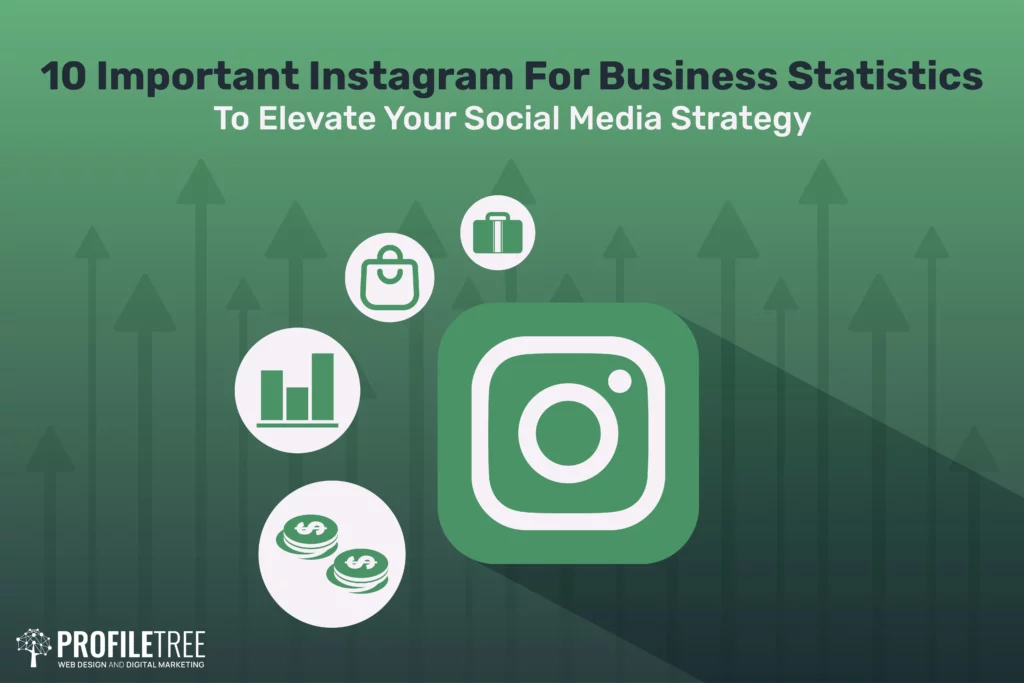In today’s swiftly evolving digital landscape, using digital marketing to expand your business internationally is no longer the preserve of large corporations with enormous budgets. Digital marketing has levelled the playing field, offering small and medium-sized enterprises the tools to reach global audiences at a fraction of the cost. By sculpting a robust digital marketing strategy, businesses can tap into new markets, adapt to cultural variations, and build an international brand with far-reaching appeal.

The success of an international digital marketing campaign hinges on understanding and adapting your approach to fit various cultural nuances and expectations. Cultivating a strong online presence through tactics like search engine optimisation tailored for global audiences ensures that your business can be found by potential customers worldwide. Additionally, leveraging platforms like social media can create a dialogue with international prospects, overcoming barriers and forging lasting relationships.
Table of Contents
Using Digital Marketing to Expand Your Business: Understanding the Digital Landscape
Before we delve into the nuances of using digital marketing to expand your business internationally, it is vital to comprehend the digital landscape. This understanding lays the groundwork for identifying and targeting the most lucrative markets.
The Role of Market Research
Market research is the compass that directs our digital marketing efforts. We can discern their demographics, purchasing habits, and preferences by meticulously analysing various facets of the target audience. Consumer preferences vary significantly across borders, and it’s our task to tap into this diversity. Through strategic market research, we acquire data that informs our decisions and customises our approach to each unique market segment.
- Demographics: Understanding age, gender, income levels, and education
- Market Size: Estimating potential customer base and demand in different regions
- Consumer Preferences: Pinpointing what drives purchasing decisions in a specific locale
Evaluating the Target Market
Once we’ve gathered our data, our next stride is evaluating the target market’s size and potential. Market size can be a telling indicator of the opportunity ahead. We scrutinise economic indicators and local competition to judge the viability of market entry. It’s about matching our strengths to the market’s needs and understanding that what works in one region might not elsewhere. Tailoring our digital strategy through localisation shows respect for consumer preferences and cultural nuances, enhancing engagement and brand loyalty.
- Economic Indicators: GDP growth, digital adoption rates
- Local Competition: Determining the level of current market saturation
- Cultural Nuances: Adapting to local customs for better resonance with the audience
Armed with a solid understanding of the digital landscape, we stand ready to cultivate international success. Our digital strategies are not just about broadening our reach; they are about connecting and growing in new, vibrant markets with precision and cultural empathy.
Developing a Global Digital Marketing Strategy
To succeed internationally, it’s vital to adapt your marketing strategy to each market’s unique landscape, utilising robust digital marketing techniques to connect with local audiences effectively.
Selecting Suitable Marketing Channels
Choosing the right marketing channels is critical for capturing your audience’s attention in different regions. Assess local social media platforms’ performance metrics, like engagement rates and user demographics, to inform where you should focus your efforts. For example, while Facebook and Instagram are popular in many countries, platforms like VK in Russia or Weibo in China may offer more targeted outreach.
Crafting a Multifaceted Content Marketing Plan
A comprehensive content marketing plan involves more than just blog posts; it includes videos, infographics, and interactive tools. “ProfileTree’s Digital Marketing Team” suggests including structured data and voice search optimisation to ensure the content meets the nuances of each locale. Aligning your content with what local customers find engaging and valuable is the kernel to enhancing brand loyalty and driving conversions.
Leveraging Email Marketing for Engagement
Email marketing remains a potent tool for keeping your brand top-of-mind with international audiences. Segment your email lists based on location and behavioural data to send personalised, benefit-driven communications. Incorporating strategic calls to action (CTAs) compels readers to take the next step, whether downloading a resource or purchasing. Remember, the goal is to make your emails so compelling that they look forward to receiving them in their inbox.
Cultural Adaptation in Digital Marketing

As we venture into international digital marketing, our focus must gravitate towards cultural adaptation. It’s vital to comprehend and integrate the cultural nuances of your target audience to ensure that the messaging resonates deeply and generates the desired engagement.
Language and Communication
We must start by addressing the imperative of linguistic fluency. Translation is not merely about converting text from one language to another; it’s about conveying the brand’s message in a way that maintains its essence and appeal. It requires a nuanced understanding of local idioms, expressions, and cultural references. This is where localisation comes into play – it goes beyond translation to adapt the content contextually, considering both language and cultural differences in communication styles.
- Example:
- Original Message: Unlock the potential of your startup with our cutting-edge solutions.
- Localized Message: Empower your enterprise with solutions that lead the market trend.
Cultural Sensitivity and Localization
Embracing cultural sensitivity is paramount when localizing marketing efforts. Our teams meticulously research local customs, values, and traditions to ensure that all elements of digital marketing—from visuals to values—speak to the audience in a culturally intelligent manner. This involves adapting brand messaging and campaigns to align with the market’s cultural expectations, thus avoiding cultural insensitivity that could alienate the audience.
- Dos and Don’ts:
- Do: Use culturally appropriate images and symbols.
- Don’t: Ignore significant cultural taboos that could offend your audience.
“Localizing content isn’t just about speaking the language; it’s about ‘speaking’ the culture,” as ProfileTree’s Digital Marketing Team might say. We weave our proficiency with digital tools into the fine fabric of cultural context to create compelling narratives that introduce brands to new markets and integrate them into the local culture seamlessly.
Leveraging Social Media for International Reach

With the right strategy, social media can be a powerful tool for businesses to reach a global audience. This approach involves choosing appropriate platforms that resonate with the target audience and building genuine relationships with local influencers to strengthen your brand’s international presence.
Choosing the Right Platforms
When deciding on international social media marketing platforms, it’s crucial to understand where your target audience spends their time. Platforms like Facebook and Instagram are widely used globally, but local platforms such as Weibo in China or VK in Russia can offer unparalleled access to regional markets. For instance, ProfileTree’s Digital Marketing Team highlights the importance of “tailoring your platform choice to the cultural habits and preferences of each target region to ensure maximal engagement and receptivity.”
Building Relationships with Local Influencers
Collaborating with local influencers who strongly connect with your brand’s target demographic can amplify your reach. These partnerships allow for authentic storytelling and help build trust within a local market. As Ciaran Connolly, ProfileTree Founder, advises, “Engage with influencers who align with your brand values and can sway public opinion in their communities. Their endorsement can act as a powerful catalyst for your brand recognition.”
By leveraging the native expertise of local influencers, businesses can navigate cultural nuances and communicate their message more effectively to a global audience.
Overcoming Language Barriers and Translation Challenges

When expanding your business internationally, addressing the language barrier is paramount. A customer’s likelihood to purchase increases when information is available in their local language. To this end, several steps are essential:
- Translation: Invest in professional translation services to ensure accuracy and cultural appropriateness.
- Cultural Nuances: Gain an understanding of the local culture, which will influence the presentation of your material and resonate with your audience.
- Technology: Utilise language translation tools, but remember that human oversight is key to maintaining context and sensitivity to local expressions.
We at ProfileTree understand how cultural nuances and translation can make or break international digital marketing efforts. By crafting content that respects customers’ local language and culture, we build trust and rapport with international audiences. – ProfileTree’s Digital Marketing Team
Here’s a strategic outline:
- Translate Key Content: Translate the core marketing materials and product information.
- Localise Your Approach: Ensure the marketing campaign is relevant to local trends, holidays, and buying habits.
- Collaborate with Locals: Collaborate with local partners or influencers who can provide insights into the local market dynamics.
- Educate Your Team: Offer your staff language and cultural sensitivity training for more effective communication.
By addressing these translation challenges and embracing local nuances, we engage with a global audience more effectively, breaking down barriers that might otherwise limit our reach and impact.
Building an International Brand
In digital marketing, crafting an international brand involves strategic positioning and clear messaging complemented by a distinctive visual identity, both vital to resonate with diverse global audiences.
Positioning and Messaging
A clear, impactful marketing message is the cornerstone of establishing a global brand. This message must align with your brand’s values and resonate across different cultures. We utilise a mix of SEO, content marketing, and localisation strategies to ensure our messaging is seen, relevant, and engaging for international markets. For instance, ProfileTree’s Digital Marketing Team might highlight the significance of “voice search optimisation” as an advanced tactic to reach a broader audience more effectively.
Establishing Visual Identity
The aesthetics of your brand—the logos, colour schemes, and overall design language—are your visual handshake with the world. It’s about creating a cohesive and memorable identity that transcends borders. To accomplish this, we focus on understanding cultural nuances and customer behaviours. ProfileTree’s Web Development Team excels in crafting websites that reflect a brand’s visual identity while being optimised for both user experience and search engine rankings.
Search Engine Optimisation for Global Audiences
To effectively reach a global audience, the right international search engine optimisation (SEO) strategy is paramount. This entails honing in on specific tactics that amplify visibility and traffic from various regions, ensuring your website speaks their language and meets their search habits.
Developing an International SEO Strategy
1. Understand and Segment Your Audience: It’s essential to research and segment your global audience by region meticulously. Recognising each segment’s unique search preferences and behaviours will allow you to tailor your SEO tactics accordingly.
2. Choose the Appropriate Domain Structure: Selecting the right domain structure—be it a country code top-level domain (ccTLD), a subdomain, or a subdirectory—can signal search engines about the geographical target of your site, potentially boosting your regional rankings.
3. Use Hreflang Tags for Language and Regional URLs: Accurately implementing Hreflang tags ensures search engines present the correct language or regional URL to searchers, improving user experience and reducing bounce rates.
4. Conduct In-Depth Keyword Research: Identifying the right keywords for each market goes beyond direct translation—it’s about understanding cultural nuances and selecting terms that resonate locally.
5. Consider Local Search Behaviours: Tailor your content to align with local search queries and trends, often adjusting for language differences, regional colloquialisms, and specific searcher intent within each target market.
6. Optimize Local Listings: Ensure that your business is listed in local directories and that your listings are consistent and accurate.
7. Focus on Technical SEO: A sitemap tailored for international SEO is crucial, as it guides search engines through your site’s structure and content, reinforcing your regional targeting.
By approaching international SEO with meticulous attention to these details, we can help increase the visibility of your business to a global audience. Our international digital marketing techniques refine visibility on a broad scale and engage users on a granular level.
Remember, the key to success in international SEO is an in-depth understanding of your global audience and the ability to translate this into a tailored strategy that enhances traffic and engagement for each market.
Navigating Legal and Regulatory Considerations
When seeking to expand a business through digital marketing to foreign markets, it is vital to comprehend and adhere to the legal and regulatory frameworks of the target country. Compliance is not just an obligation but an essential component that safeguards your business against potential fines and legal issues.
Understanding Local Laws: Each country has unique business laws which affect digital marketing. Engaging with a local legal expert can enhance your understanding of these regulations.
Intellectual Property Rights: Secure your brand by ensuring your trademarks and copyrights are recognised in your target international markets.
Privacy and Data Protection: Regulations like the GDPR in Europe impose strict rules on data usage. It’s crucial to respect these to avoid heavy penalties.
Advertising Standards: Different countries have diverse advertising standards; becoming familiar with these is necessary to avoid misleading marketing practices.
Taxation and E-Commerce: Understand the tax implications of selling in foreign markets to avoid unexpected costs.
Checklist for Legal Compliance:
- Ensure your website meets the accessibility standards of the target market.
- Translate terms and conditions, and privacy policies into the local language.
- Verify that your digital marketing practices comply with local advertising laws.
- Keep records of customer consents and data processing activities.
Our responsibility is to remain informed and current with the latest international e-commerce law changes. At ProfileTree, we place great emphasis on the importance of understanding and navigating the complexities of legal and regulatory considerations in digital marketing. As Ciaran Connolly, ProfileTree Founder, says: “Respecting international laws is not just legal compliance—it’s a brand integrity issue. A misstep here can cost you not just in fines but in customer trust globally.”
Analysing and Utilising Performance Metrics
When expanding your business internationally, understanding and applying digital marketing performance metrics is crucial for strategy refinement and success. We consider key indicators to gauge the effectiveness of online activities and influence market share and revenue growth:
- Analytical Tools: Utilise tools like Google Analytics and other industry-specific software to track user behaviour and campaign impact.
- Metric Selection: Focus on metrics that align with international expansion goals, such as conversion rates by region and site traffic sources.
- Engagement Rates: Identify the content resonating with international audiences.
- Conversion Rates: Assess the effectiveness of calls to action and user pathways.
- Customer Acquisition Cost (CAC): Determine the average expense to gain a new customer.
- Return on Investment (ROI): Calculate the profitability of marketing campaigns.
- Cost Per Click (CPC): Use CPC to refine the budget allocation for pay-per-click campaigns.
Actionable Steps:
- Set Benchmarks: Understand your current base performance before venturing into new markets.
- Localise Content: Adapt your marketing materials to cater to linguistic and cultural nuances, which can increase click-through rates and conversions.
By integrating performance metrics into your strategy, you can make data-driven decisions to optimise your campaigns and enhance your international presence. Regularly revisiting these metrics will ensure your brand stays relevant and competitive globally.
The Logistics of International Distribution

When venturing into global markets, it’s crucial to master the logistics of international distribution. This involves understanding the complexities of shipping and legal compliance and leveraging e-commerce and supply chain optimisation to ensure products reach customers efficiently.
Streamlining E-Commerce Operations
In our digital age, e-commerce serves as the backbone of international distribution. We must design robust digital infrastructures that can handle global sales volumes. This involves integrating a strategic approach to the supply chain, ensuring that inventory management systems are synchronised with real-time sales data to mitigate stock discrepancies and delays.
- Implement advanced inventory management software.
- Cultivate relationships with regional suppliers to shorten supply chains.
Exploring Shipping and Fulfillment Options
When products cross borders, shipping and fulfillment complexities multiply. It’s essential to explore a range of options to find the most cost-effective and reliable methods for transporting goods internationally. Establishing partnerships with fulfilment centres across the globe can be a strategic move for simplifying this aspect of global expansion.
- Assess the benefits of different shipping methods, including air and sea freight.
- Select fulfilment centres strategically located to serve key markets.
By ensuring that our e-commerce infrastructure and shipping logistics are finely tuned, we position ourselves to capitalise on the opportunities afforded by global markets. Our experience has shown that a well-planned logistic strategy not only saves time and reduces costs but also enhances the overall customer experience, which is pivotal for sustaining international growth.
Cost Management and Budget Allocation

When embarking on digital marketing, especially with an eye towards international expansion, managing costs effectively and allocating your budget wisely are crucial. Here are some key considerations:
Investment: Start by understanding that investment needs careful planning. Identify the core areas where spending makes the most sense—for instance, on platforms with proven return on investment (ROI).
Financial Planning: Develop a detailed financial plan. This should reflect initial outlay—market research or localisation efforts—and ongoing expenses, like PPC campaigns or SEO optimisation.
To ensure effective cost management and budget allocation, consider the following steps:
- Review Past Spend: Analyse which areas have delivered the best ROI.
- Set Clear Objectives: Know what you aim to achieve with each penny spent.
- Forecasting: Project future spending and potential returns based on analytics and market trends.
- Monitor Regularly: Keep a rigorous check on spend against budget, adjusting as necessary.
We believe in a balanced approach, prioritising efficiency and effectiveness. It isn’t always about spending more but spending smarter. For instance, by focusing on factors to consider when creating a digital marketing budget, we can target where the money can bring the most value.
Here’s a quick breakdown of potential costs in a digital marketing budget:
| Cost Category | Expected Investment | Potential ROI |
|---|---|---|
| Paid digital media (e.g. PPC, social ads) | 16% of total budget | Direct sales lift |
| SEO Optimisation | Variable | Organic traffic growth |
| Content Creation | Variable | Engagement & brand loyalty |
Remember, smart financial planning contributes to a lean and strategic approach to expanding your business in the global digital marketplace.
Frequently Asked Questions
In our digital age, expanding your business internationally requires a nuanced understanding of digital marketing. Below, we answer some of the most common queries regarding the strategies necessary for successful international growth.
What strategies should be adopted for successful international expansion through digital marketing?
For successful international expansion through digital marketing, firms should prioritise understanding local markets and adapting campaigns accordingly. Emphasising local SEO strategies, utilising country-specific social media platforms, and developing a robust content marketing plan that resonates with the target audience are essential steps.
Which digital marketing channels are most effective for reaching global audiences?
The effectiveness of digital marketing channels can vary by region, but social media, search engines, and email marketing consistently prove to be powerful tools for reaching global audiences. Selecting the right channels depends on where the target audience is most active and engaged.
How can one tailor digital marketing campaigns to suit diverse international markets?
Tailoring campaigns requires an in-depth understanding of cultural nuances, local consumer behaviour, and language differences. Developing unique content that addresses the specific needs and interests of each market and adhering to local regulations are key to customising digital marketing campaigns.
What cultural considerations should be taken into account when using digital marketing for overseas growth?
Cultural considerations include respecting local customs, values, and traditions. Businesses need to acknowledge cultural differences in communication styles, humour, and symbolism. Understanding these subtleties can prevent misunderstandings and enhance the brand’s reputation abroad.
How important is localisation in international digital marketing campaigns?
Localisation is critical for connecting with international audiences. It goes beyond translation, embracing local trends and references to establish trust and relate to consumers on a personal level. Localisation ensures that marketing efforts are perceived as authentic and resonate with the local demographic.
What role does analytics play in shaping digital marketing strategies for global business development?
Analytics are vital as they provide insights into campaign performance across different markets. Using analytics strategically helps us optimise marketing efforts, tailor content, and make informed decisions that lead to better outcomes and maximised ROI in international markets.


